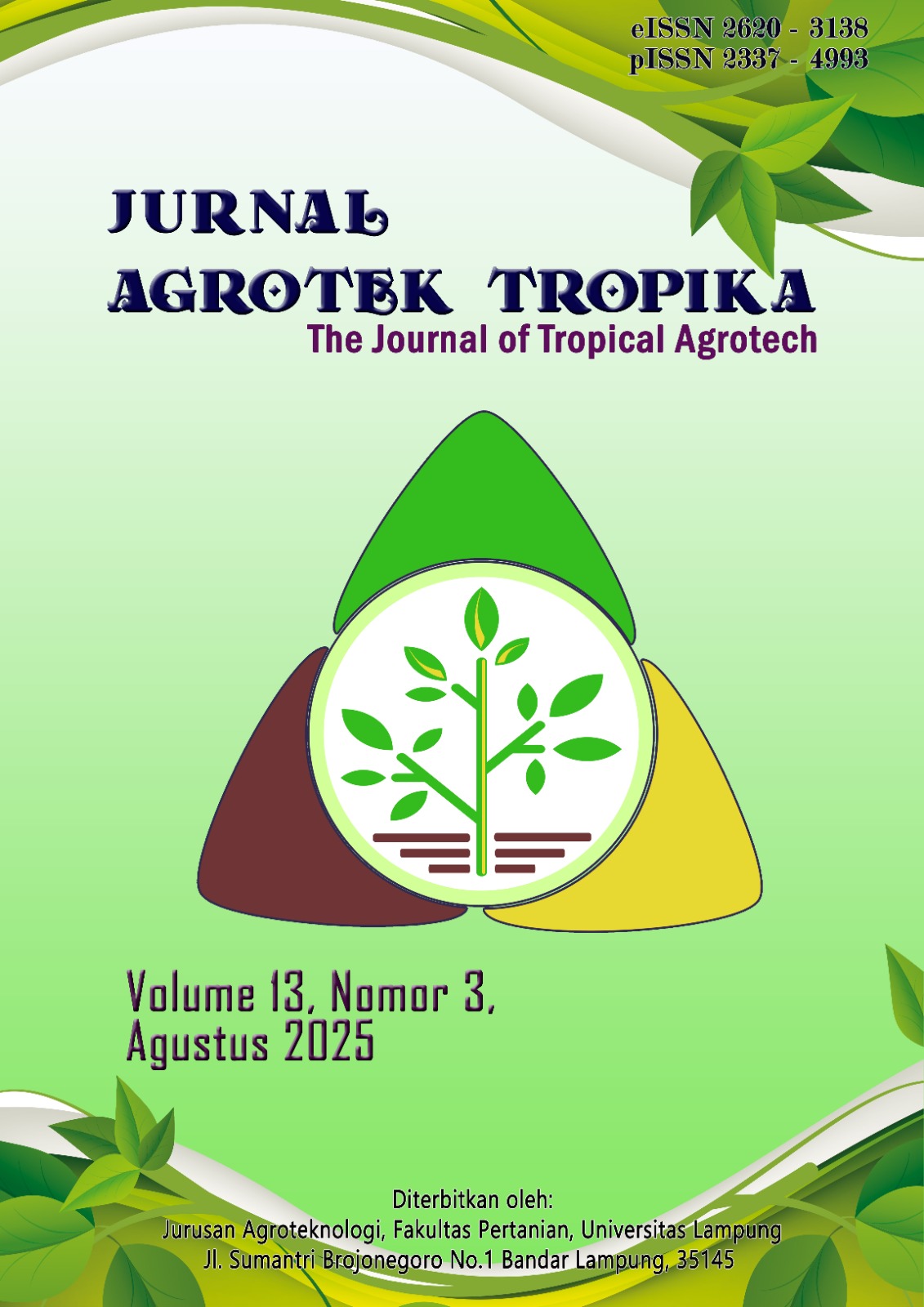PHENYLALANINE-INDUCED MODULATION OF CALLUS CHARACTERISTICS AND SECONDARY METABOLITE ACCUMULATION IN Ocimum basilicum L. UNDER IN VITRO CONDITIONS
DOI:
https://doi.org/10.23960/jat.v13i3.11044 Abstract View: 67
Abstract View: 67
Keywords:
Herbal Plant, Phenylpropanoids, Secondary MetabolismAbstract
Basil (Ocimum basilicum L.) is widely used in traditional medicine due to its rich content of phenolic and flavonoid compounds. However, the natural production of these metabolites is limited. Callus culture offers a controlled method to enhance their accumulation, with medium composition, particularly precursor supplementation, playing a critical role. Phenylalanine, an aromatic amino acid, is a key precursor in the biosynthesis of phenolics and flavonoids via the shikimate pathway. This study aimed to evaluate the effect of phenylalanine on callus growth and the accumulation of total phenolic and flavonoid compounds in basil. The experiment was conducted at the Plant Tissue Culture Laboratory, Faculty of Agriculture, Universitas Padjadjaran, using Murashige and Skoog (MS) medium with phenylalanine concentrations of 0, 1.3, 1.6, and 2 g.L-1, each replicated six times. Results showed that phenylalanine treatments caused brown coloration, compact callus texture, and inhibited growth, as indicated by reduced fresh and dry weights. The 1.6 g.L-1 treatment produced the highest total phenolic content, while the 2 g.L-1 treatment yielded the highest flavonoid content. These findings suggest that phenylalanine can enhance secondary metabolite accumulation in basil callus, although it may suppress biomass growth.
Downloads
Downloads
Published
How to Cite
Issue
Section
License
Copyright (c) 2025 Siti Julaeha, Erni Suminar, Syariful Mubarok, Rahmat Budiarto, Fiky Yulianto, Anne Nuraini, Anni Yuniarti, Vira Kusumadewi, Rika Meliansyah, Dikdik Kurnia

This work is licensed under a Creative Commons Attribution 4.0 International License.
Jurnal Agrotek Tropika (JAT) is licensed under a Creative Commons Attribution 4.0 International License.
The copyright holder is the author. Authors publishing under any license allowed by the journal retain the copyright and full publishing rights without restrictions.
The Creative Commons Attribution 4.0 International (CC BY 4.0) license allows users to copy, distribute, and adapt the work, even for commercial purposes, as long as proper attribution is given to the original creator. This is a highly flexible license that encourages widespread dissemination and use of creative works, supporting innovation and collaboration across various fields.











